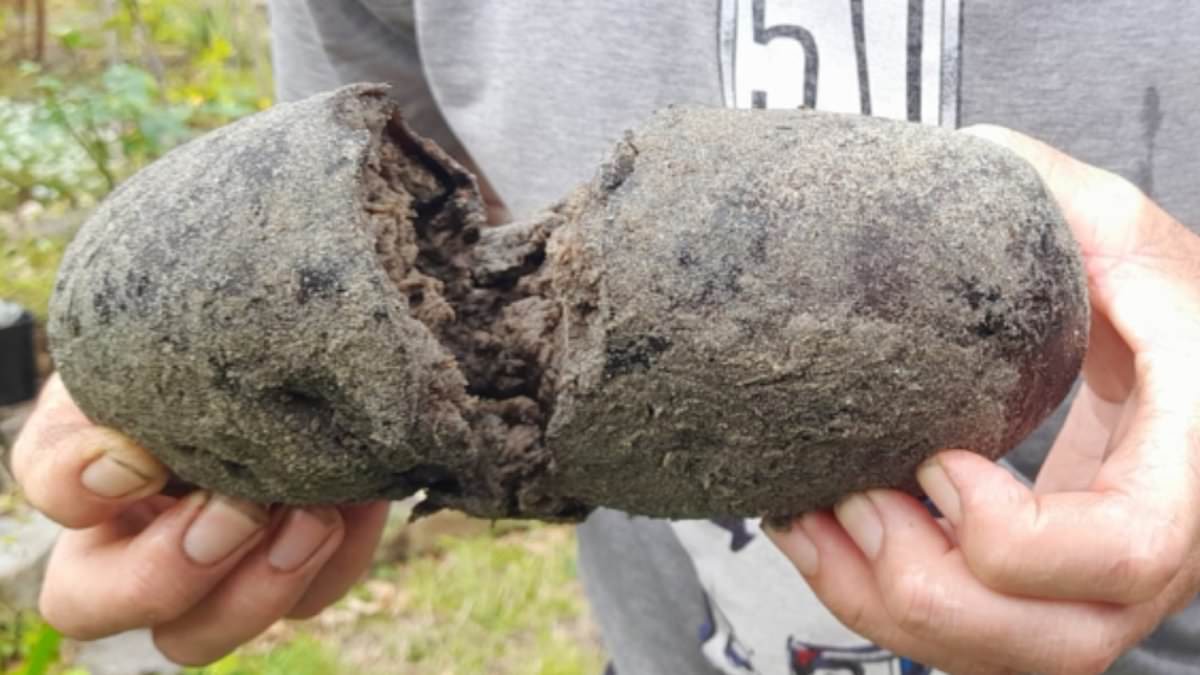A ‘large stinking lump’ found on an n beach could be worth more than $59,000 as people speculate online about what it is.
Locals picked up the grey looking mass on Pirates Bay Beach in Eaglehawk Neck, Tasmania, one commenting that it ‘smells frightful’ and ‘seems to have a leathery outer coat’.
Some people speculated that it could be a rotting sea sponge while others have guessed it could be ambergris.

Locals picked up the grey looking mass on Pirates Bay Beach in Eaglehawk Neck, Tasmania, saying it ‘smells frightful’ and ‘seems to have a leathery outer coat’
Ambergris is a solid, waxy material which is formed in the intestine of sperm whales, and excreted to float on the ocean’s surface when they die.
It eventually loses it’s unpleasant odour and develops a sweet or musky scent which is considered ‘floating gold’ in perfumery.
Ambergris was once valuable, selling at over $59,000 per kilogram, but that worth diminished after it was replaced with synthetic chemicals last century.
As ambergris is a whale product, the Department of Climate Change, Energy, the Environment and Water states that Environment Protection and Biodiversity Conservation Act 1999 ‘regulates it’s possession and movement in the Commonwealth Marine Area’.
If found, it should be reported to the relevant state or territory environment department as each state government has different laws surrounding the possession of whale products.

Some have speculated the lump was ambergris, which was once valuable and sold for over $59,000 per kilogram, but that worth diminished after it was replaced with synthetic chemicals last century
Dr Vincent Raoult, an ecologist and fisheries biologist, said he thinks it could be a rotting orange tunicate colony, but it’s hard to say without closely examining the mass.
‘It’s unlikely to be ambergris given it has some clear structure with a visible layer on the outside, and some tissue organisation on the inside,’ he told Yahoo News .
‘A sponge would not feel leathery, they would feel rough to the touch — they’re also not often so round.’
